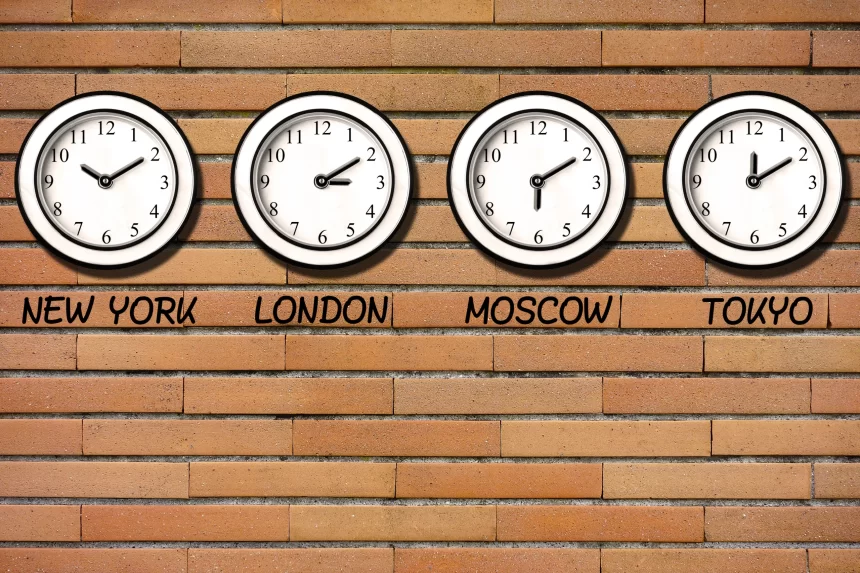Ever wondered why we have different Time Zones? Well, Earth spins on an imaginary pole called its axis. This constant motion determines the rhythm of our daily lives. In a remarkable display of nature’s precision, our planet completes a full rotation every 24 hours, giving birth to what we commonly refer to as a day. Imagine the Earth as a globe and shining a flashlight upon it – certain areas bask in sunlight while others are swathed in darkness. As Earth gracefully rotates, different parts of our world experience the alternating dance of sunlight and darkness, giving rise to the enchanting cycle of day and night.
Sunrise and Sunset: Nature’s Timekeepers
As your location on Earth gradually rotates into the path of sunlight, you are greeted by the mesmerizing spectacle of sunrise. Conversely, when your position exits the illuminated zone, the horizon unveils a breathtaking sunset. These natural phenomena serve as our timekeepers, marking the transitions between day and night. Moreover, their splendor is a testament to the harmonious interplay of Earth’s rotation and the ever-changing positions of the sun.
The Need for Time Zones
Imagine a world with just a one-time zone – noon would represent the middle of the day in some places, while others would find themselves in the early morning, evening, or even the dead of night. However, to overcome this temporal imbalance, the world came together in the late 1800s to create a solution. Brilliant scientists undertook the challenge of dividing the globe into distinct time zones, ensuring that each region could experience daylight and darkness at appropriate times.
Decoding the Time Zone Map
To construct the time zone map, these visionary scientists delved into the depths of Earth’s movements. They discovered that our planet’s rotation carries it approximately 15 degrees every 60 minutes, completing a full circle of 360 degrees after 24 hours. Hence, armed with this knowledge, they skillfully divided the Earth into 24 sections or time zones, with each zone spanning 15 degrees of longitude.
Prime Meridian (PM) and Greenwich Mean Time (GMT)
The imaginary dividing lines that define time zones originate from Greenwich, a serene suburb of London. The primary line of division, known as the prime meridian, is the reference point for all longitude measurements. The time observed at Greenwich is called Greenwich Mean Time (GMT). As we travel west from Greenwich, each 15-degree time zone represents an hour earlier than GMT, while heading east corresponds to an hour later.
Embracing the Beauty of Time Zones
Thanks to the existence of diverse time zones, regardless of our location on this vast planet, we can adjust our daily lives. Noon signifies the middle of the day when the sun is at its pinnacle, while midnight encapsulates the heart of the night. Let us marvel at the wonders of time zones, as they enable us to experience the symphony of light and darkness, regardless of where we call home.





